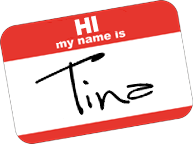
Signs of Dependence
Scroll DownSubstance use can be seen as a continuum, ranging from: non-use – use – problematic/out of control use – dependence. We are at different places on the continuum at different points in our lives. Some of us have never used Tina and don’t want to. Some of us have tried it and don’t like it. Some of us are able to use it only occasionally. Some of us use problematically, and are out of control, where significant life areas are negatively impacting, and we cannot seem to cut back. These impacts can be job-related, relationship problems, or mental and physical health. Abuse with Tina can easily lead into dependence because of the highly addictive nature of the drug.
Dependence means that we have a hard time functioning without Tina, that using Tina no longer is pleasant so much as a need, and that either using, or not, causes distress. Dependence is a clinical term usually synonymous with addiction. Many users and clinicians view the term dependence as having less stigma than addiction. Stigma, real and perceived, can be a barrier to seeking professional help.
Some of us, especially in the 12-Step disease model of dependence, embrace the identity of “Addict” as a way to remind ourselves of the seriousness of our problem with Tina. Others feel this perspective disempowers us from ever being recovered. Regardless of what we call it, how do we tell if we are?
For more information on the model of addiction as exemplified by Crystal Meth Anonymous (CMA), or to join CMA, click here.
Signs of Tolerance
- The same amount produces diminished effects. To get high, we need to do more than we used to. We may try different modes of consumption, e.g. start slamming meth, or mix other drugs to intensify the rush of the Tina.
- Withdrawal: physical and psychological symptoms are felt when coming down off Tina. These include, but are not limited to: depression, quick to anger, exhaustion, aches, skin problems, and itchiness. etc. For more on long-term symptoms click here.
- We may take other drugs, or more Tina to relieve withdrawal symptoms from Tina.
- We use more frequently. Once a month becomes once a week.
- We take more Tina over a longer period of time than we intended.
- We persistent want to cut down, or control our use, but our attempts are continually unsuccessful.
- Tina uses up more and more of our time, between scoring, using, and recovering.
- We give up or cut out social, recreational or work-related activities because of our use.
- We use even though we know we have a problem, and that Tina brings problems
If you want to reduce your use? Click here.
If you want or need help, check out our Support Section.

